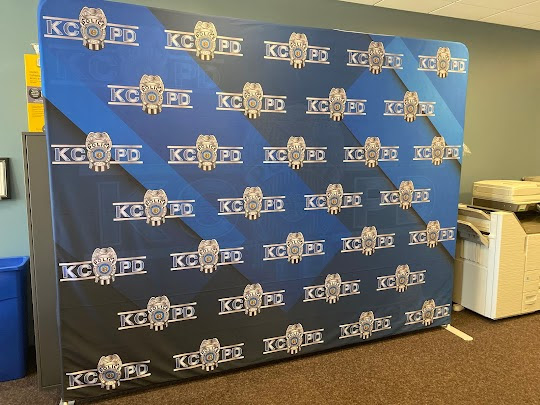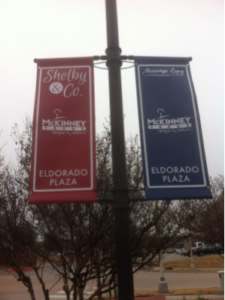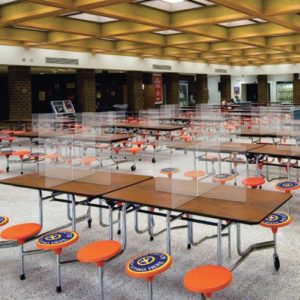What is the Best Logo for my Step and Repeat Backdrop Banner, Table Throw, Feather Flag or Banner Stand?
Understanding the difference between logo file formats is important when ordering a large format print project. While it isn’t your job to know about printing and the intricacies of resolution and bitmaps, if you are reading this, it is your job to order a product with your company logo. With the common goal of having a high quality professional product to show off your brand, make sure you are working with a printer who will help you achieve this. Read more to learn about file formats for printing.



Once you have found the perfect printer that you can rely on to print your Step and Repeat, The Graphic Edge, they will ask you to send them your logo and sponsor logos if applicable. The typical response is to pull the logos from the internet or grab the logo from your signature line. Sending this to the printer will cause the printer, if you are working with a reputable company, to ask for an ai file, eps, vector logo or high resolution pdf/jpg. At this point, you are forced to go back and request this from your marketing department, client or office manager and they will in turn grab the easiest logo and send it back to you. Frustration will ensue while logos are sent back and forth with the tagline – how about this? will this work? and this is the best logo we can get. Hopefully, your printer is prepared to go back and forth until they force you to go back to the native source of your logo, otherwise you will get a blurry bitmapped logo. In order to nip this in the bud, I have created a cheat sheet that you can use to request the proper logo from your team or sponsors so we can save everyone time and effort. (Cheat Sheet at the bottom of the article)
Pixelation, bit mapping…what does that even mean?
It means your logo will look unprofessional . Why does this happen? Usually, it is because the resolution or the file format used wasn’t acceptable for the printing process. Resolution refers to the size of the file provided. The bigger the file size the more resolution which is good.
There are several file types for a logo, whether using for your website, social media or a print job, they all might require a different file format. But, not to worry, I will explain exactly what you need to keep your brand looking consistent across all platforms.
Why are there so many different file types?
Good question, some files are best for maximizing quality when printing and some are used to download quickly on your website or quickly shoot across the email spectrum. When emailing, blogging, using social media or advertising on the WWW, you want speed and slowing things down with a large logo only clogs the system, so a small logo file (like a png) is perfect to maintain your color but still be relatively small.
For a designer or printer you need an AI/EPS/VECTOR file and sometimes a PDF/JPG/PNG will work but it has to have enough resolution to not pixelate when scaled to fit your print job.
Below is a list of file formats in order of printer preference.
- PDF
- Editable
- Scaleable
- Universal for MAC or PC
- 100 dpi at the Full Size of the Print File (12” x 12” recommended for Step and Repeat)
- JPG
- Scaleable
- Widely used for Large Format
- Not Editable or Transparent
- 100 dpi at the Full Size of the Print File (12” x 12” recommended for Step and Repeat)
- AI / EPS / VECTOR
- Editable
- Scaleable
- Adobe Illustrator Native File, where the Logo was Designed
- Vector Format
- PNG
- Internet Based File Format
- Not recommended for print projects
As you can see, there are many variables when sending logos. Some file formats are meant for print and some for digital. Choosing the appropriate file type depends on how you plan on using your print project. Knowing the proper file type to use for your project will prevent mistakes and quality issues in the production process. Call The Graphic Edge and we will make sure your print project will come out professional every time.




